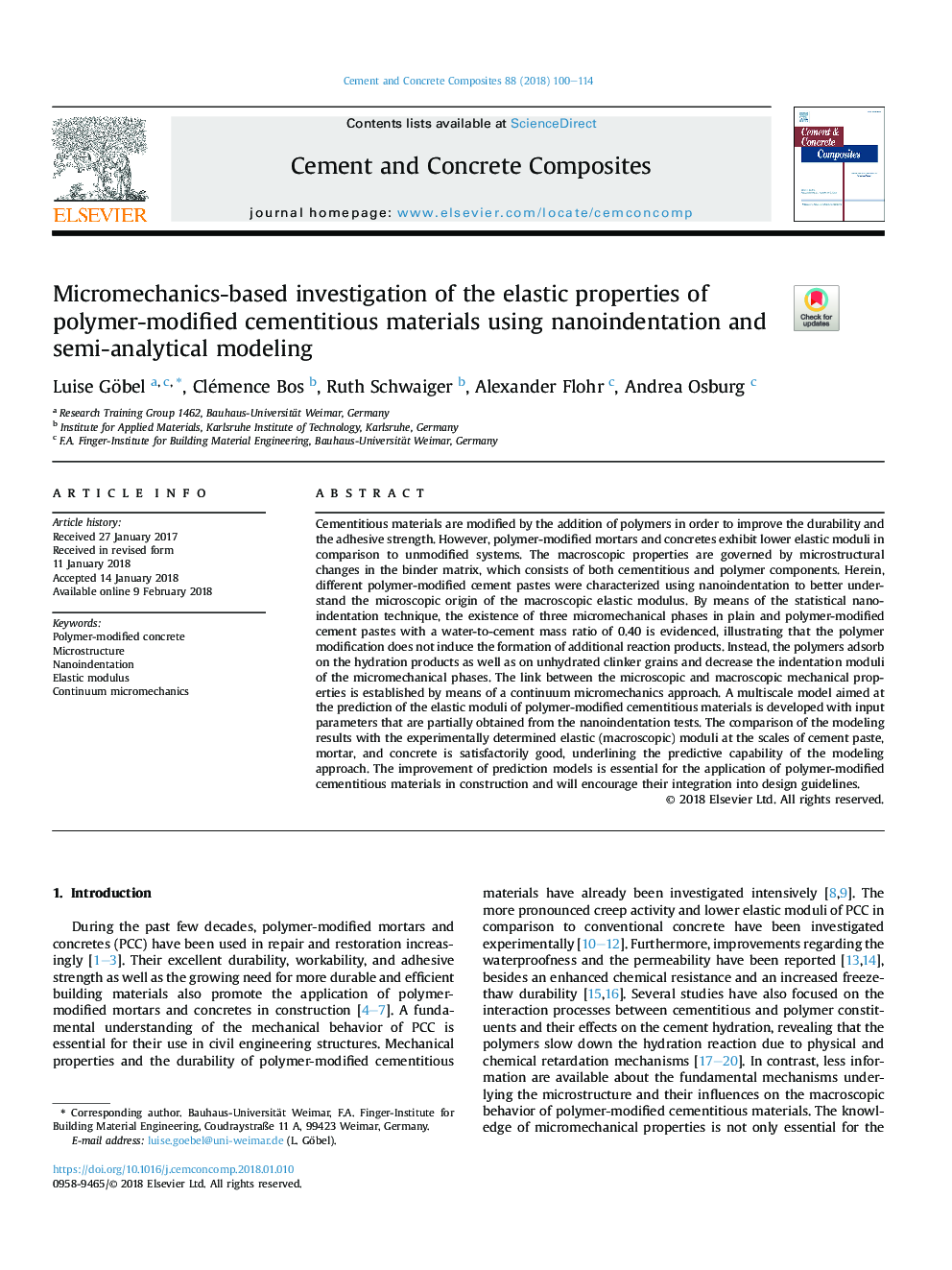| Article ID | Journal | Published Year | Pages | File Type |
|---|---|---|---|---|
| 7883870 | Cement and Concrete Composites | 2018 | 15 Pages |
Abstract
Cementitious materials are modified by the addition of polymers in order to improve the durability and the adhesive strength. However, polymer-modified mortars and concretes exhibit lower elastic moduli in comparison to unmodified systems. The macroscopic properties are governed by microstructural changes in the binder matrix, which consists of both cementitious and polymer components. Herein, different polymer-modified cement pastes were characterized using nanoindentation to better understand the microscopic origin of the macroscopic elastic modulus. By means of the statistical nanoindentation technique, the existence of three micromechanical phases in plain and polymer-modified cement pastes with a water-to-cement mass ratio of 0.40 is evidenced, illustrating that the polymer modification does not induce the formation of additional reaction products. Instead, the polymers adsorb on the hydration products as well as on unhydrated clinker grains and decrease the indentation moduli of the micromechanical phases. The link between the microscopic and macroscopic mechanical properties is established by means of a continuum micromechanics approach. A multiscale model aimed at the prediction of the elastic moduli of polymer-modified cementitious materials is developed with input parameters that are partially obtained from the nanoindentation tests. The comparison of the modeling results with the experimentally determined elastic (macroscopic) moduli at the scales of cement paste, mortar, and concrete is satisfactorily good, underlining the predictive capability of the modeling approach. The improvement of prediction models is essential for the application of polymer-modified cementitious materials in construction and will encourage their integration into design guidelines.
Related Topics
Physical Sciences and Engineering
Engineering
Industrial and Manufacturing Engineering
Authors
Luise Göbel, Clémence Bos, Ruth Schwaiger, Alexander Flohr, Andrea Osburg,
